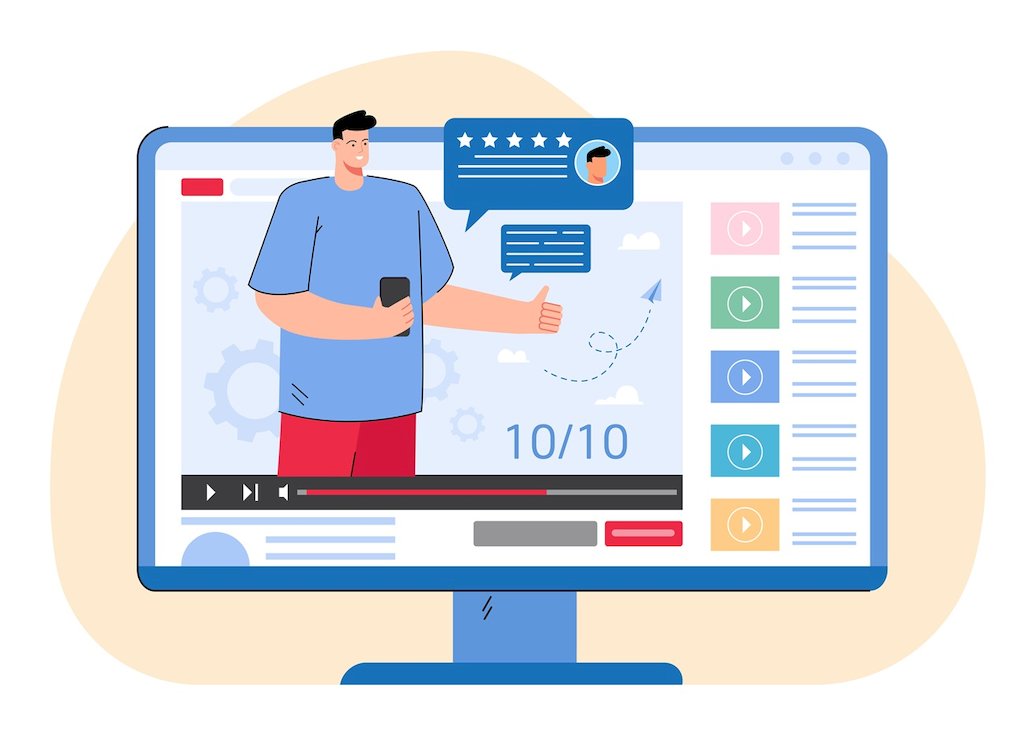Traditional in-person learning methods are no longer the most viable option now that many employees work remotely. Conventional L&D methods are costly, time-consuming, and not that effective. Instructor-led training is a passive experience which means retention rates are generally low. With dispersed workplaces and short attention spans, the use of on-demand video learning is transforming training. It can enhance productivity by improving retention, reducing downtime, and creating a culture of continuous learning.

The benefits of on-demand video learning for employees
Personalized, easy-to-access on-demand video training allows employees to learn with the least interference to their daily tasks.
Flexibility
Traditional training requires employees to learn in a certain location and at a specific time. On-demand video learning means they can learn at any time and from anywhere. They don’t have to disrupt their workflow to learn.
When they have access to information at exactly the right time, they can implement what they learn immediately. Immediate use improves knowledge retention. Most employees today use mobile phones for learning so videos should be mobile-friendly and perform seamlessly on smaller screens.
Self-paced learning
With in-person training, employees have to keep up with the pace at which an instructor imparts knowledge. On-demand video learning offers them the opportunity to learn at a pace that suits them. They can always rewind a video and listen again to complex information that’s more difficult to grasp.
Higher engagement
Video-based employee training is more engaging than text alone because it appeals to more than one sense. Visual and auditory engagement reinforces learning and improves knowledge retention. Employees are more motivated to learn if they know the material is engaging and will make them better at their jobs.
How on-demand learning boosts workplace productivity
While traditional training has to appeal to a wide range of learners, on-demand training can cater to the learning journey of each individual. Employees don’t have to waste time learning what doesn’t apply to them. They can take control of their learning. Skill acquisition is faster which ultimately improves job performance and overall productivity.
Minimizes training downtime
When employees are able to learn in real time instead of attending training sessions at a particular time, it minimizes downtime. They can access short, targeted videos when they need them and apply them straight away. They see learning as a part of their workflow instead of separate from it.
Reduces repetitive training sessions
Once video training materials are created, businesses can reuse them indefinitely. This reduces the need for repetitive, in-person sessions and creates more consistency. When employees all have access to the same materials it helps to maintain standards across the organization. Updating and enhancing videos ensures that they stay up-to-date and relevant.
Empowers employees with immediate access
Just-in-time job training supports employees in the workflow. It addresses specific knowledge gaps at exactly the right time. Employees can easily record their webcams and screens to share video messaging that helps other employees to learn. Internal experts can create videos that address the real-life challenges of employees in their specific job roles.
Best practices for implementing on-demand video learning
Create a centralized video library
Employees should have access to workplace training videos in a centralized location. The platform organizations use for on-demand video training should support both live streaming and video on demand. This means they can save a live stream and offer it later for on-demand training.
Employees who miss a live stream can watch it later. It is also possible to edit these videos and add interactive elements to them. Adding captions and subtitles can make them accessible to more employees, including ones who are hard of hearing or non-English speakers.
On the Cincopa video hosting platform, users can create a dedicated employee video portal. This can accommodate a wide range of videos that users can organize in a way that makes them easy to find. Videos can cover many different areas from basic skills training to management and compliance training.
Use interactive elements
Corporate e-learning videos often include interactive elements that help to encourage engagement and make learning more immersive. Some interactive elements are quizzes, polls, annotations, and interactive scenarios. They all require employees to make choices or take some form of action. Completing quizzes can reveal what they know and don’t know.
Polls and surveys allow them to give feedback which can help with improving training. Scenarios in videos immerse employees in real-world situations and they have to make choices that influence how narratives unfold. This makes training more practical and relatable. They can learn by doing so in a risk-free environment.
Track learning progress with video analytics
Businesses need to use an on-demand video training platform that takes a data-driven approach. This helps them to monitor the effectiveness of their training programs. They need to identify which resources are most effective and others that may not be hitting the mark. Analytics can also reveal which employees are completing training and others who are struggling. Those who are struggling can receive additional support.
The Cincopa platform’s advanced video analytics include dashboards with graphs and video heatmaps. Colors on heatmaps represent viewer engagement. Users can see where employees skip sections and rewatch others. They can find out how many videos employees watch and what actions they take. This all helps them to make data-driven improvements to their video training.

Success stories: Companies improving productivity with on-demand learning
Examples of successful on-demand videos
- Cisco is a multinational digital communications corporation based in America. One of its employee training videos uses simple whiteboard animation. It explains a fast and efficient solution to get Wi-Fi working for more businesses in a way that’s easy for employees to understand.
- Mimecast is a global cybersecurity provider. It uses a real-life scenario about a security threat to warn employees in an entertaining yet educational way.
- Gasunie, a Dutch natural gas infrastructure and transportation company, has an animated staff training video about the 10 Golden Rules of Safety. It transforms what could be a boring topic into a much more engaging one that’s more entertaining to watch.
Examples of companies using on-demand learning to improve productivity
Praxis Labs, a technology startup, has gained international recognition for its use of interactive video content to enhance employee training. Interactive AI and virtual reality (VR) tools allow it to simulate high-pressure work environments. They help employees to navigate issues such as cultural sensitivities and bias. By engaging in immersive simulations employees can improve their soft skills, including communication and emotional intelligence.
Bosch is a leading technology and engineering company that uses microlearning successfully. Its short, ‘bite-sized’ videos focus on one specific topic or skill and only last about three to five minutes. It also optimizes its videos for mobile and uses gamification features to make learning more fun. The company has seen an improvement in knowledge retention and better performance outcomes.
Laing O’Rourke is another company that successfully uses ‘bite-sized’ employee training modules. This large construction and engineering firm provides its employees with short, accessible, and engaging video content that’s easy to digest. It has seen a significant increase in training participation and better performance.
Conclusion
On-demand video training helps to support continuous learning and development in the fast-paced business world. It offers flexible learning that meets the needs of individual employee schedules and learning styles. Businesses can maintain a competitive edge by ensuring that employees are able to improve their existing skills and acquire new skills. On-demand training reduces costs and saves time. It minimizes disruptions to work schedules and leads to higher productivity and more employee satisfaction.
The Cincopa video hosting platform facilitates the use of a video-based learning strategy. Businesses can host, track and analyze training videos. This ensures employees have instant access to high-quality, interactive training content. Visit its home page to sign up for a free trial.









